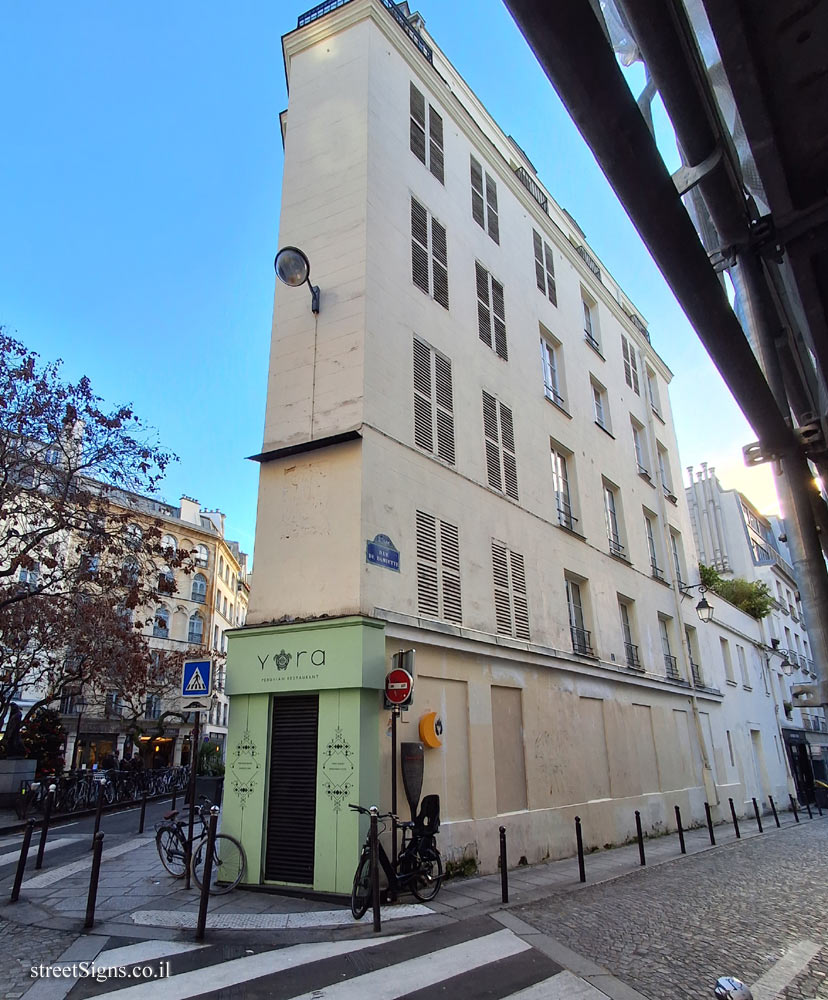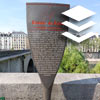One of the series of signs describing historical places in Paris. The signs were placed starting in 1992 and are also called sucettes Starck (Starck’s Lollipops) after Philippe Starck who designed them.
The sign depicts the area known as the "Court of Miracles", a gathering place for beggars and other downtrodden people. The name was given in light of the fact that the beggars presented themselves as having a disability in order to win the mercy of the benefactors. And miraculously, after they returned to their homes they became healthy and whole (until the next day)
The place was photographed on the same day
 Click for a larger image Translation of the text on the sign
Click for a larger image Translation of the text on the sign:
[An illustration of a ship, symbolizing the symbol of Paris]
History of Paris The court of miracles At the foot of Charles V’s wall was the main den of beggars and thieves, the largest of the Parisian miracle courts. It occupied the space circumscribed by the streets of Damiette and des Forges. Henri Sauval (1623-1676) described it in his "History... of the city of Paris": "To enter it, you have to go down a fairly long slope of earth, tortuous, rough, uneven. seen a half-buried mud house, all tottering with old age and rot, which is not four toises square (60 square meters) and which nevertheless houses more than fifty households responsible for an infinity of legitimate, natural little children and stolen". This population of thieves and prostitutes has a king "who usually takes the name of Coesre, sometimes the king of Thunes", flanked by a court caricature, officers named Archisuppõts de l’Argot, Cagoux, Coquillarts, Courteaux de Boutanche, Calots, Capons, Francsmitoux, Malingreux, Marcandiers, etc. Destroyed in 1667 on the orders of police lieutenant La Reynie, this courtyard of miracles was reconstituted, as it appears on the plans of the first third of the eighteenth century.

 Click for a larger image
Click for a larger image  Click for all signs belonging to The History of Paris (Starck's Lollipops)
Click for all signs belonging to The History of Paris (Starck's Lollipops)
 205 Meter |
205 Meter |  241 Meter |
241 Meter |  253 Meter |
253 Meter |  267 Meter |
267 Meter |  281 Meter
281 Meter